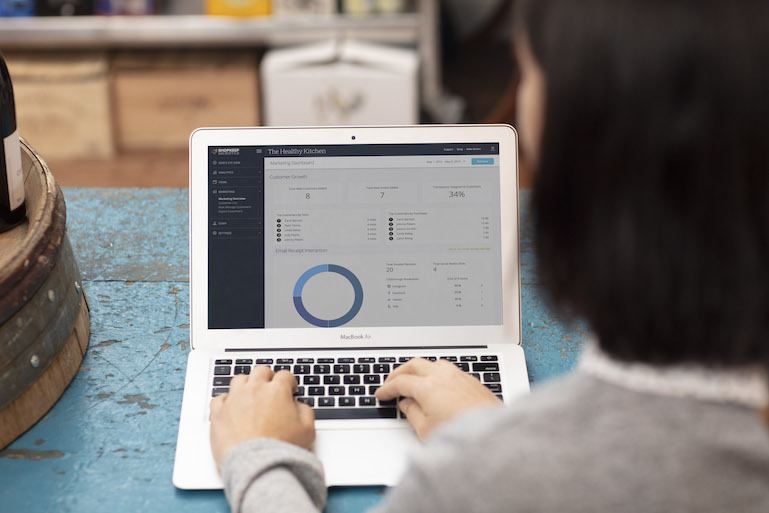
How To Do Small Business Taxes
Taxes. They can be one of the most intimidating aspects of starting a small business. And it’s true that business taxes are more complex than personal taxes. But you don’t need a degree in accounting to understand — and even file — your own company’s tax return.
In this article, we’ll show you how to do small business taxes and stay sane during the process.
Choose a Business Structure
The Internal Revenue Service (IRS) divides businesses into five structures, each with their own regulations and nuances. Before you can file a tax return for your small business, you must first choose a business structure. The Small Business Administration lays these out in detail, and below is an overview.
Sole Proprietorship
This is the “default” structure. If you perform any type of money-making activities outside of being an employee, you are a sole proprietor. It’s a useful label for freelancers and contractors, but not appropriate for businesses who plan to grow, because your personal and professional assets are combined.
Partnership or LL (Limited Liability) Partnership
Popular in fields such as law, a partnership allows two individuals to go into business together, and a limited-liability partnership protects one member of the partnership from the poor business decisions of their partner. Though this is also not the best structure if you want your business to grow into a “formal” business, it’s often used at the beginning of a business when two owners decide to start a company.
Limited Liability Company
An LLC is an extremely popular business structure because it protects your personal assets (like your home and savings) even if your business doesn’t succeed. LLCs pay a lower tax rate than corporations (more on that later) and the tradeoff is that it’s difficult to transfer ownership within an LLC. When you start an LLC, you as an individual are still intimately tied to your business structure.
C Corp
The classic corporate structure is known as a C Corp. As a legal entity, a corporation is completely separate from its founders and shareholders. If one founder leaves, the company stays relatively intact. While more expensive to form, corporations can raise money and sell stock. They are technically taxed twice: once when they make a profit and again when dividends are paid to shareholders as taxable income. This is known as corporate income tax.
S Corp
Like a C corp, an S Corp exists as a separate legal entity. It’s essentially a C Corp with one huge loophole: it is not taxed twice and pays no income taxes. To claim S Corp status, your business needs to apply for it through the IRS and meet certain criteria, which apply to the majority of small businesses within the United States. Gains and losses are passed to the shareholders as taxable income, who report them on their individual taxes.
B Corp
A B Corp is taxed like a C Corp, but are created to benefit the public good. Some states hold B Corps accountable for their missions; others do not.
Close Corporation
A Close Corporation is the smaller, less formal version of a B Corp. They are essentially S corps created for the benefit of the public good.
Non-Profit Corporation
Many organizations that are created for the public good choose to be structured as a non-profit as opposed to a B Corp or a Close Corporation. Non-profits, also known as 501(c)(3) corporations, do not pay any taxes, and must follow rules about how profits are distributed.
Cooperative
Popular among independent grocers and progressive preschools, cooperatives are owned and operated by the members using them. Member-owners own shares and help determine the decisions of the cooperative. A Cooperative is not “double taxed,” except when they pay dividends to their shareholders that do not impact the running of the cooperative.
Get an Employee Identification Number
To file a tax return for your business, you will need an EIN from the IRS. It’s easily obtainable by filling out Form SS-4. Think of this as a social security number for your business.
Self-Employment Tax
The average small business owner may wonder whether the owner of the business will also have to pay self-employment taxes. If you are a sole proprietor, half of a partnership, or a member of an LLC (the three easiest business structures to set up) you will also need to pay self-employment taxes in addition to your business taxes.
Unfortunately, this self-employment tax can be quite the unexpected surprise. To prevent you from having to pay a large lump sum to the IRS after filing your tax return, we highly recommend that you use Form 1040-es to estimate your tax burden for the upcoming tax year and pay estimated taxes to the IRS on a quarterly basis. Do it today and thank yourself later.
SEE ALSO: How to Handle Tax Time as a Self-Employed Business Owner
Keep Detailed Records
We cannot stress the importance of record-keeping, and it’s called record “keeping” for a reason. First, maintain detailed financial records — and then hold on to them! Store most business records for three years, employment records for four years, any omitted income tax records for six years, and certain deductions for seven years.
Those are a lot of words to basically say: keep all records of any financial transaction related to your business—including anything you buy and anything you sell. Almost everything you buy for your business counts as a deduction, which is money you don’t have to pay come tax time.
The only way to achieve this without becoming a TLC-level hoarder is to store records electronically. Most business owners use programs like QuickBooks to keep track of their expenses. In addition to never having to create excel sheets, a major benefit of QuickBooks is the ability to easily upload images of receipts via their mobile app, so you don’t need to build an elaborate receipt-filing system.
Your accounting software will be your best friend during tax season. Your second best friend will be your point of sale system (POS). A robust POS will seamlessly integrate with accounting software. For example, you can send your ShopKeep sales to Quickbooks every night, saving you hours of bookkeeping every week, and preventing expensive mistakes when you file.
Your accounting and POS software will likely store your records in the cloud. Every year, as you’re preparing your taxes for the previous tax year, be sure to back up all your records and store them in a separate location, like a dedicated dropbox account or even a physical hard drive stored in a safe location. In the worst-case scenario (an audit by the IRS), you will easily be able to find and share all your records.
Determine Which IRS Form is Right For Your Business
To file your taxes, you (or your tax professional) will fill out forms deliver them to the IRS. Most people wait until the last minute to file their tax return (they are generally due April 15) but you can file your tax return from the previous year beginning on January 1 of the current year. Each type of business structure comes with its own forms.
Sole Proprietorship
If you are a single-person business, or are building an income-generating business that does not yet have an employer identification number (EIN), you need to fill out form 1040, plus any other relevant forms.
Partnership
If you are half of a partnership, you will need to fill out form 1065 and probably 941.
Limited-Liability Company
When it comes to IRS forms, an LLC is a unique case. Because an LLC is a designation bestowed by the states, and the IRS is a federal agency, an LLC will either be taxed like a corporation, partnership, or a sole proprietorship (“disregarded entity” in tax parlance).
Corporation
Corporations use form 1120 to pay income tax and are also on the hook for employment taxes.
Corporations, non-profits, and cooperatives are more complex business structures than sole proprietorships, partnerships, and LLCs. If you own one of the latter, you may be able to file your own taxes with the help of software. If you own the former, you will likely need to consult a tax attorney to make sure you are complying with the tax code.
File Your Taxes
Most small business owners — even sole proprietors — use an accountant to simplify their lives during tax season. If you go this route, you will simply gather all your records (see above) and hand those to your accountant, and she or he will fill out the forms and file your tax return for you.
The occasional brave business owner chooses to file their own taxes. This is now easier than ever with tax return software. New tax software options catering to small business owners are released every year, so you’ll have no trouble finding a DIY solution. These programs charge a small fee to file your tax return, which is generally less than an accountant’s fee. This is only recommended if you own a very simple business with no depreciating assets, like select sole proprietors.
Business Tax Deductions
Because businesses generally have a greater tax burden than individuals, you can write off almost all business expenses as tax deductions. This is why detailed records are so important.
A few tax deductions? You can write off all equipment (including point of sale software), wages you pay your employees, sales tax, interest, insurance, and many other business expenses.
As a business owner, you should consult a tax professional to maximize your tax deductions and make sure anything you bought to improve your business in the previous tax year is written off. Keep those receipts!
SEE ALSO: Small Business Tax Deductions
Pay Outstanding Tax to the IRS
Especially if you are a new small business owner and are paying self-employment taxes for the first time, you will probably owe money to the IRS after you file your tax return. Don’t panic. You can pay the government using your bank account, a credit card, or you can even set up a payment plan. And next year you will definitely pay quarterly estimated tax and save yourself the sticker shock, right? Right.
To review, you will need to take the following steps to do small business taxes:
✔️ Choose a business structure.
✔️ Obtain your Employer Identification Number.
✔️ Keep electronic records with the help of software.
✔️ Determine which tax form you need to use to prepare your taxes.
✔️ File your tax return with the help of software or an accountant.
✔️ Pay any outstanding taxes to the IRS.
With the right technology and a lot of organization, you can handle your small business taxes like the pro you are.
Want to try ShopKeep for yourself?
Just answer a few easy questions.
Need help finding the right point of sale?
Just complete the form. We’ll call you right back to explain how ShopKeep can work for you.
Hit the ground running.Sprinting, in fact!
Read our free, comprehensive guide, Small Business 101, to learn all you need to know about starting a thriving business.

